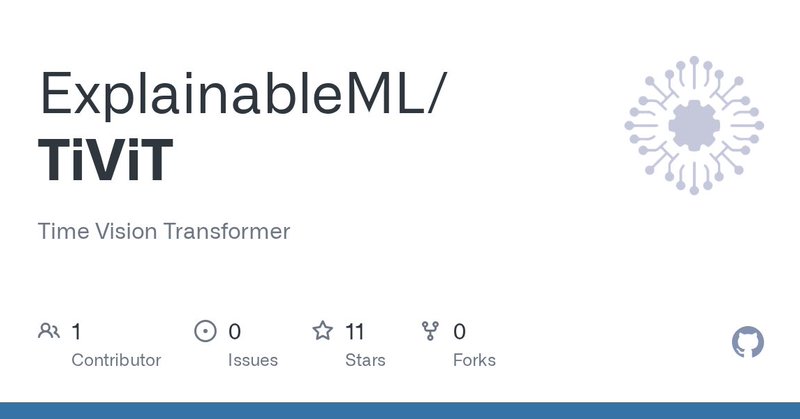
Simon Roschmann
@SimonRoschmann
Followers
35
Following
118
Media
5
Statuses
23
PhD student @ExplainableML @TU_Muenchen @HelmholtzMunich. Passionate about ML research.
München, Bayern
Joined January 2020
Reward hacking is challenging when fine-tuning few-step Diffusion models. Direct fine-tuning on rewards can create artifacts that game metrics while degrading visual quality. We propose Noise Hypernetworks as a theoretically grounded solution, inspired by test-time optimization.
8
52
345
🚀 We are happy to organize the BERT²S workshop @NeurIPSConf 2025 on Recent Advances in Time Series Foundation Models. 🌐 https://t.co/QuqapQhMJp 📜Submit by August 22 🎓Speakers and panelists: @ChenghaoLiu15 Mingsheng Long @zoe_piran @danielle_maddix @atalwalkar @qingsongedu
0
4
6
Please check out our work! 📄 Preprint: https://t.co/3at0eaVsEL 💻 Code: https://t.co/GbmqJUuQyI
#TimeSeries #VisionTransformer #FoundationModel
github.com
Time Vision Transformer. Contribute to ExplainableML/TiViT development by creating an account on GitHub.
0
0
4
This project was a collaboration between @ExplainableML (@HelmholtzMunich, @TU_Muenchen) and Paris Noah’s Ark Lab (@Huawei). Thank you to my collaborators @QBouniot, @Vasya2104, @IevgenRedko, and particularly to my advisor @zeynepakata for guiding me through my first PhD project!
1
1
6
TiViT is on par with TSFMs (Mantis, Moment) on the UEA benchmark and significantly outperforms them on the UCR benchmark. The representations of TiViT and TSFMs are complementary; their combination yields SOTA classification results among foundation models.
1
0
4
We further explore the structure of TiViT representations and find that intermediate layers with high intrinsic dimension are the most effective for time series classification.
1
0
3
Time Series Transformers typically rely on 1D patching. We show theoretically that the 2D patching applied in TiViT can increase the number of label-relevant tokens and reduce the sample complexity.
1
0
3
Our Time Vision Transformer (TiViT) converts a time series into a grayscale image, applies 2D patching, and utilizes a pretrained frozen ViT for feature extraction. We average the representations from a specific hidden layer and only train a linear classifier.
1
0
4
How can we circumvent data scarcity in the time series domain? We propose to leverage pretrained ViTs (e.g., CLIP, DINOv2) for time series classification and outperform time series foundation models (TSFMs). 📄 Preprint: https://t.co/3at0eaVsEL 💻 Code: https://t.co/GbmqJUuQyI
5
21
62
It is a great honor to receive the ZukunftsWissen Prize 2025 from the German Academy of the Sciences @Leopoldina with generous support of the @CoBaStiftung 🎉 This achievement wouldn’t have been possible without my wonderful group @ExplainableML @TU_Muenchen @HelmholtzMunich
🎉Der „ZukunftsWissen“-Preis 2025 von Leopoldina und @CoBaStiftung geht an @zeynepakata @TU_Muenchen/@HelmholtzMunich. Die Informatikerin erhält die mit 50.000 € dotierte Auszeichnung für ihre Forschung zur erklärbaren #KI. https://t.co/cnTA7ky7jx
6
6
138
📢 Landed in Nashville🎺 for #CVPR2025! The EML group is presenting 4 exciting papers — come say hi at our poster sessions! More details in the thread — see you there! 🏁🌟
1
4
12
🌏 #ICLR2025 is coming to the beautiful city of Singapore — April 24–28! We're excited to share 4 upcoming papers being presented at the conference. Check out the thread for highlights, and come chat with the authors if you're interested! 🧵👇
1
8
18
I worked on this project as a student research assistant at @FraunhoferAISEC together with @shabaaash, Nicolas Müller, Philip Sperl and Konstantin Böttinger. Huge thanks to my collaborators and the institute!
1
0
2
We leverage the disentanglement of features in the latent space of VAEs to reveal feature-target correlations in image and audio datasets and evaluate them for shortcuts.
1
0
1
For real-world applications of machine learning, it is essential that models make predictions based on well-generalizing features rather than spurious correlations (shortcuts) in the data.
1
0
2
Excited to share that our paper "Shortcut Detection with Variational Autoencoders" has been accepted at the #ICML Workshop on Spurious Correlations, Invariance and Stability. 📄 Paper: https://t.co/dKNbizfuab 🖥 Code:
1
1
3
Das @BSI_Bund erklärt, wie sich mithilfe von #KI Gesichter, Stimmen und Texte täuschend echt fälschen lassen und greift dabei auf #Deepfake-Demonstratoren des @FraunhoferAISEC zurück. Wir bringen Mensch und Maschine bei, Fälschungen zu erkennen.
#Deepfakes bauen auf Künstlicher Intelligenz auf und können dafür verwendet werden, digitale Medien gezielt zu manipulieren. Auf unserer neuen Themenseite „Deepfakes - Gefahren und Gegenmaßnahmen“ gibt es detaillierte Infos: https://t.co/Qsbac0Xs7U
#DeutschlandDigitalSicherBSI
0
5
7
#DeepFake made by @FraunhoferAISEC: Zu Forschungszwecken haben unsere Kolleg*innen mithilfe von #KI ein manipuliertes Video erstellt, das den Reifegrad von Deep Fakes bei der Fälschung von Medieninhalten illustriert. Hier geht's zum Video: https://t.co/sAHYRdLQ35
0
2
4



















